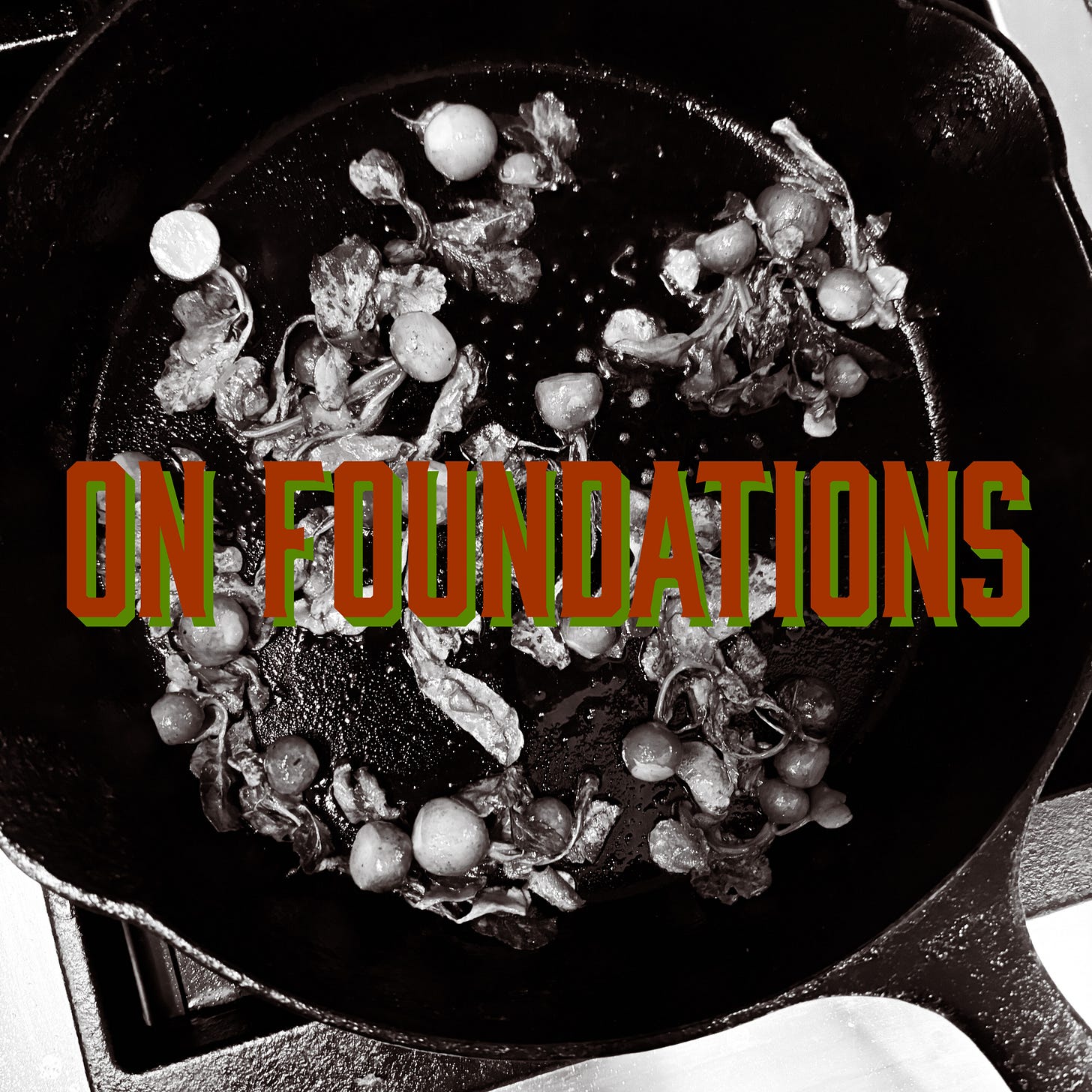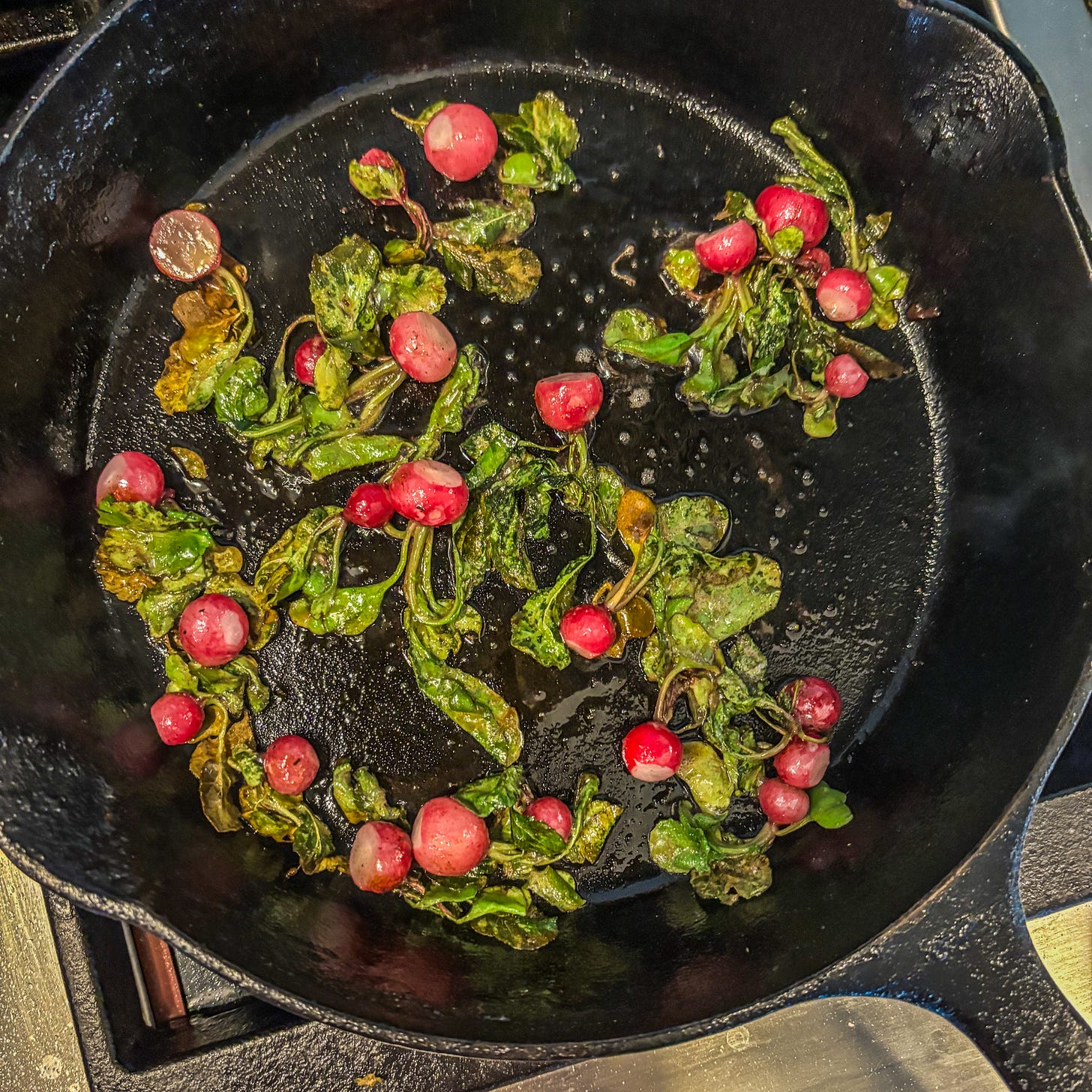I was talking to
the other day and the idea of personality tests came up. I took a few of these types of tests in high school — I had a teacher who was big on them1 — but don’t think I have “tested my personality” in the last decade. And, to be honest, I’m not sure what more knowing my “personality” is going to do for me. One learns that he is a ENTP or an ISFJ and then…?2 Seems like a lot of effort to learn something you can probably intuit on your own3.I was thinking about this conversation — and the associated traumas and diagnoses, self- and clinical — recently as I read this piece from
, who writes the newsletter . While I am not a girl, I am the father of one. I find that Freya’s writing — which touches on “modern girlhood” — is exceptionally enlightening for someone who A) grew up as one of three boys, and B) is fairly removed from the modern experience of childhood, filled with social media and technology, TikToks and texting4. Kiddo CWD is still at least a decade (I hope) away from having to think about a lot of the issues she touches on, and the Warthog further, but I find it’s helpful to have a sense of what is coming.In the post I’m referencing, “Our New Religion Isn’t Enough,” Freya expounds on the idea of leading a life viewed through a “therapeutic lens.” As she quotes Christopher Lasch, “[people] today hunger not for personal salvation…but for the feeling, the momentary illusion, of personal well-being, health, and psychic security.” She goes on to describe how we “define ourselves by our diagnoses… [mimicking] religion, all the time.” This worldview, as I explained to Sam after giving him some grief on personality tests, is one that doesn’t resonate with me; it’s almost alien to imagine going through life as labeled by the Diagnostic and Statistical Manual of Mental Disorders.
This isn’t a condemnation of that mentality — I recognize and respect that many people have real, deep-seated issues that can only be worked through with the help of a professional. But when that mentality flows through to the normal behavior of girls — and kids in general, as I think about the Warthog — that’s worrisome to me. Assuming I can manage to parent halfway decently enough to keep any real emotional wounds from forming, I wonder how I can keep my own kids from being immobilized by their normal, adolescent emotions and feelings? There are, and always will be, big emotions as they navigate middle school drama and high school intrigue. This is an inevitability of growing up. How can I keep them feeling supported, loved, and understood — so they don’t just “give up?”
I think to accomplish that — to be a good parent — more than anything, you need to provide a stable foundation.
Freya writes on this:
And so I think when young people talk about what’s plaguing them—situationships, not getting on the housing ladder, even the climate crisis—what they are often getting at is the transience of everything. Everything uprooted. Everything unstable. They don’t feel attached to anything, anyone, anywhere. They don’t even feel like the Earth will stick around. Nothing in our lives does! Our parents couldn’t even hold it together. And for some reason I can’t fathom we think the answer is to keep encouraging young people to be more detached? Be more free! Travel more; hook up more; enjoy those situationships; careful not to invest too much in any one person because that’s how you get hurt. But isn’t that the problem? We say our problem is patriarchy and climate change and election results and the cost-of-living crisis but I think there’s something deeper here; a deeper loss and longing that no material changes would solve. We are looking for something we can place our feet on that won’t fall away.
I’ve written before about the idea of “staying rooted.” How we need a base, a foundation, to absorb the ups and downs of life. I think the best thing — the only thing — I can do as a parent is to help my kids establish those roots. Ones that run deep, that keep them settled in place amidst all the uncertainty in life. It’s part of the reason why I lean so heavily into the idea of radical eating and radical living — when you know where your foods comes from, you know the permanency and resiliency of the soil, of the earth; when you know how to embrace change, accepting it with open eyes, you also know that it isn’t inherently bad or good… it’s just change, and eventually things will again settle. And when it does, your roots will remain in place.
As Freya concludes, “[what] we need most in a rapidly changing world is rootedness.”
Given this has been such a heady essay, we’ll keep the recipe light this week— but we will also keep it on theme. We’re sauteeing radishes in browned butter.
Radishes are a root, of course. They’re easy to grow, grow quickly, and taste delicious5. We just finished off the last of the early season radishes we planted in our garden — a favorite first harvest — and I’m already looking forward to a fall planting and the subsequent eating.
This is about as easy as can be, so let’s get going.
Heat a cast-iron pan to hot, and add a large knob of butter — the best you can find. Let it heat in the pan, swirling occasionally, allowing the butter to brown but not burn6. You’ll know it’s ready when it smells nutty. At this point, add a handful of radishes, with the greens intact — as fresh as you can get them, ideally just picked from your garden. Let these sauté in the butter until the radishes are tender and the leaves begin to crisp.
Serve along side whatever you’d like — these may steal the show.
So there you have it, brown-butter radishes. Make these now, while the radishes are fresh and in-season. Even if you’ve had bad radish experiences in the past7 — raw ones, out of season, too pungent and picked too late — this will likely change your outlook.
Not much else for you today, so I’ll leave you to prepare for your weekends. We have a big one on the ranch — tomorrow,
and I are supposed to (finally) be picking up the replacement cow for the one we lost last fall8, then on Sunday, I’m knocking out my annual physical challenge, doing a 5K open water swim with Uncle Steady supporting me on a paddleboard.Whether you spend your weekend also picking up beef, exerting yourself physically in the ocean, or just strengthening your familiar roots, I hope you spend it memorably. The official start to summer is just around the corner — make sure you take advantage.
We’ll see you back here next week.
Mr. Guthridge, for the five of you who might have a recollection of this moment in my life. Mr. Guthridge holds the distinction of teaching me in both elementary school and in high school, being the one who introduced me to essay writing (in the five paragraph format), logic puzzles, the concept of “eating that frog,” and the principle of “The Secret.” Reflecting further upon his curriculum — specifically in high school — I’d say he was especially prescient in his teaching, particularly as it relates to the topic at the brunt of this essay.
When I told this to Sam, he remarked — specifically about the enneagram test, which is focused on “core traumas” — that maybe I’m remarkable in the sense that I don’t have any core trauma. That, maybe, I grew up with a childhood that satisfied my needs and allowed me to grow without any inflicted wounds or without stunting my emotional growth.
(This, by the way, is a testament to Nana and Grandfather CWD, who set me up with an incredible foundation in childhood, are beyond supportive, and are role models for how I hope to parent. And, I know Mrs. CWD feels the same way about Gma and Papa CWD on her end.)
I haven’t taken the enneagram test yet, as Sam suggested I do. He thinks I’d classify as an “Enthusiast” — someone who dives in enthusiastically and deeply on many topics. And sounds about right — I am enthusiastic and while I suppose taking the test might help me recognize how that enthusiasm may help or may hinder me as I work towards a goal, it’s probably not going to fundamentally change too much about the way I view the world.
Yes, Sam, this is a dig at your “intuitive” framework for almost anything. XOXO.
Being on the front end of the millennial generation, I am reminded often that I was one of the last generations to have been born in a world without a ubiquitous internet (I remember when we first got an internet connection when I was in maybe fifth grade). While we certainly had technology — the Brothers CWD and I spent a lot of time playing GameBoy and N64 — it wasn’t omnipresent in our lives. You could (and had to) turn it off. Even getting “online” meant sitting down at a desktop computer, “dialing up” the internet, and browsing at speeds that make even the worst LTE cell connection look blazing fast.
They’re also great for soil health if you plant them as a cover crop, breaking up the soil, moving nitrogen and other nutrients, and their deep roots help manage erosion.
This is easier in a stainless steel pan, when you can see the color of the butter, but I like cast-iron more. Work harder, not smarter.
I distinctly remember my friend Tanner, who every day throughout middle school, would get a bag full of radishes as part of his lunch — unadorned and raw. At least his mother had the decency to peel and slice them!









There’s so much to unpack with this topic - and more, it seems, everyday. I agree, rootedness is essential.
Love the "way" you root your musings to your recipes. But I also like reading the musings, and waiting for the recipe to connect it all together.